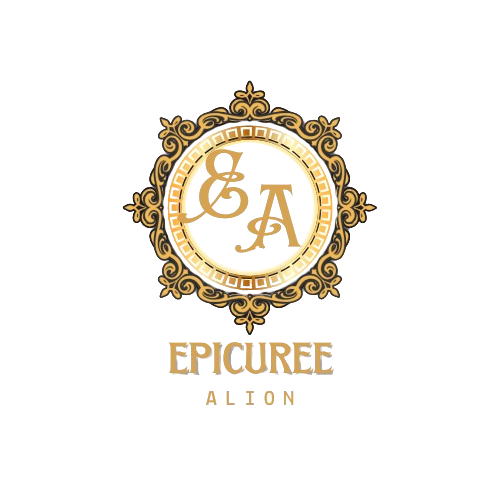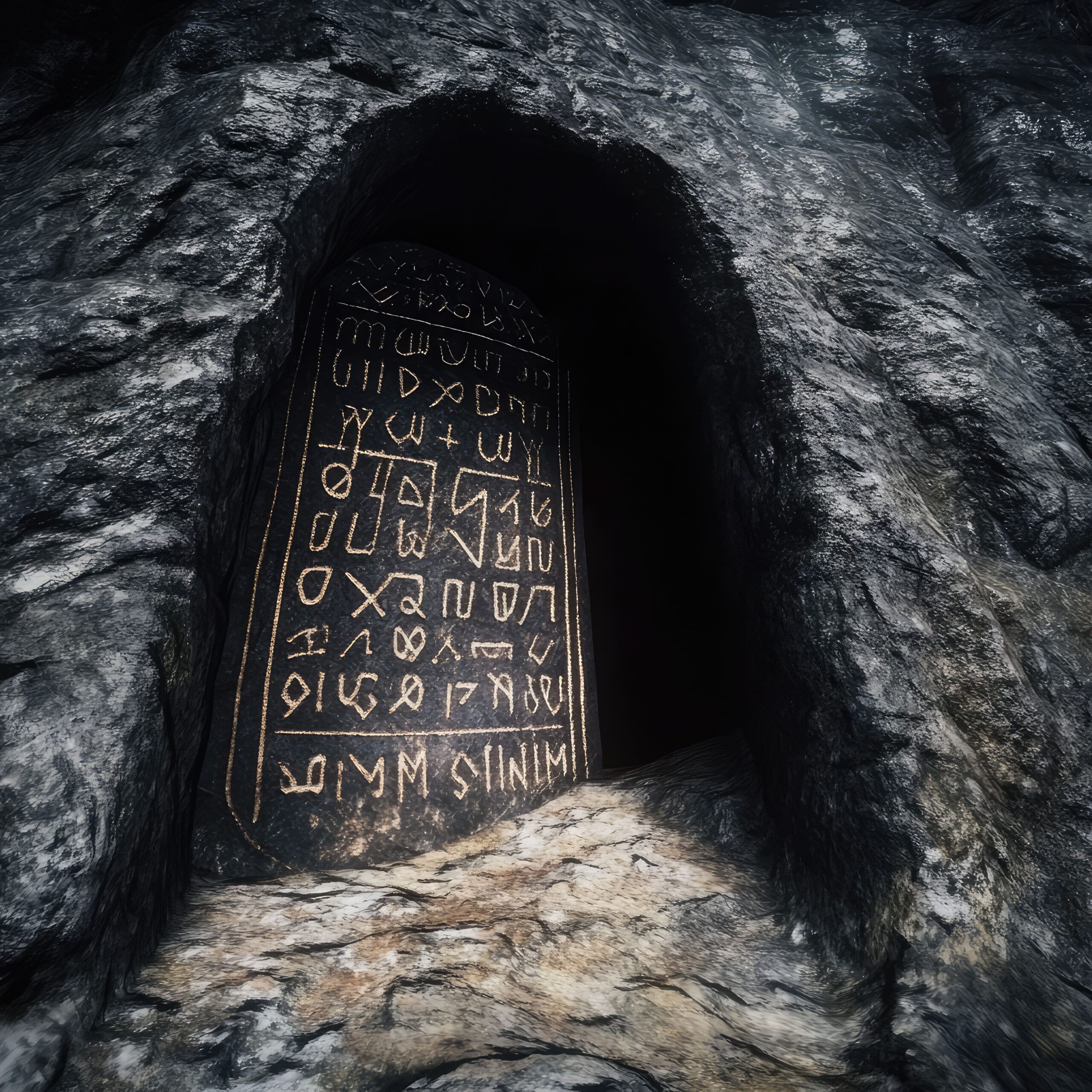Introduction
The Rosetta Stone ranks among the most significant archaeological discoveries in history. Unearthed in 1799 during Napoleon’s Egyptian campaign, this granodiorite slab revolutionized how we understand ancient civilizations. It features the same text written in three scripts—Greek, Demotic, and Egyptian hieroglyphs. This unique characteristic allowed scholars to decipher hieroglyphs, which had been an unsolved mystery for centuries.
Imagine a time when the stories, culture, and administration of ancient Egypt remained inaccessible, locked in undeciphered symbols. The Rosetta Stone bridged this gap. It enabled scholars to decode these symbols, bringing ancient Egyptian history to life.
Here’s an intriguing detail: French soldiers accidentally discovered the Rosetta Stone while building a fort near Rosetta (modern-day Rashid). They found it embedded in rubble, unaware it would become a cornerstone for Egyptology and the study of ancient languages.
This blog explores the Rosetta Stone’s history, its role in unlocking ancient knowledge, and its legacy as a symbol of linguistic and cultural discovery. Whether you’re a history enthusiast or simply curious about humanity’s achievements, this journey will reveal why the Rosetta Stone remains one of the most important artifacts ever discovered.
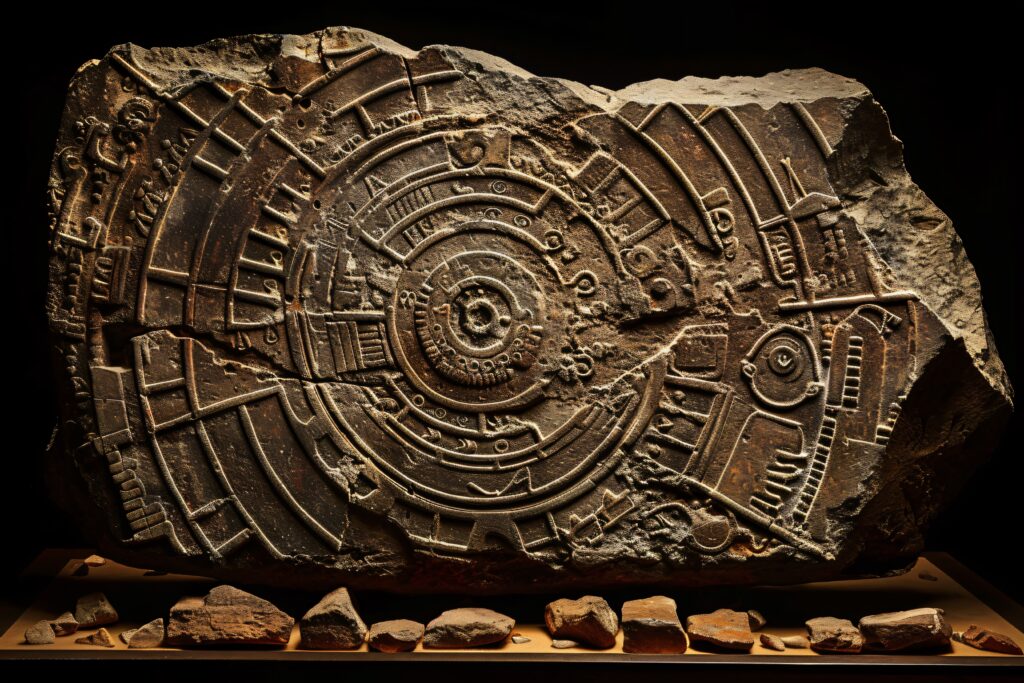
What Is the Rosetta Stone?
The Rosetta Stone is a historically and linguistically significant artifact discovered in 1799 near Rosetta (modern-day Rashid) in Egypt. This ancient stele provided the key to decoding Egyptian hieroglyphs, a script that had remained unreadable for over 1,500 years. Its importance stems from its inscriptions, written in three distinct scripts, each revealing valuable insights into ancient Egyptian culture, governance, and language.
A Brief Description of the Rosetta Stone
The Rosetta Stone is a dark, dense slab of granodiorite, measuring 112 cm tall, 75 cm wide, and 28 cm thick, and weighing about 760 kilograms. Although it has a small fragment missing at the top, the artifact remains an impressive example of ancient craftsmanship.
Its inscriptions represent a decree issued in 196 BCE during the reign of Pharaoh Ptolemy V Epiphanes. The decree honors the pharaoh and reaffirms the loyalty of the priesthood. It details measures to benefit temples and ensure harmony between the state and religious institutions. What makes the Rosetta Stone extraordinary is its three scripts: Greek, Demotic, and Egyptian hieroglyphs.
The Languages Inscribed on the Stone
Ancient Greek:
The final section contains Ancient Greek, reflecting Egypt’s Hellenistic influence under the Ptolemaic dynasty. Greek served as the administrative language for the ruling elite.
Hieroglyphs:
The top section features Egyptian hieroglyphs, a complex writing system used for sacred texts and formal inscriptions. It symbolized the divine and was reserved for religious or monumental purposes.
Demotic:
Below the hieroglyphs is the Demotic script, a simplified, cursive writing style used for legal and administrative purposes. It served as the everyday script for the literate population.
The Languages Inscribed on the Stone
One of the most intriguing aspects of the Rosetta Stone is its use of three languages—each serving a unique purpose in ancient Egyptian society. Understanding why these scripts were included provides a window into the social and administrative dynamics of the time.
- Hieroglyphs:
The topmost script on the stone is Egyptian hieroglyphs, a complex and elegant writing system used primarily for sacred and monumental purposes. Reserved for religious texts and formal inscriptions, hieroglyphs were the “language of the gods” in ancient Egyptian culture. - Demotic:
Below the hieroglyphs lies the Demotic script, a more streamlined and practical writing style that evolved from earlier Egyptian scripts. Demotic was used in everyday contexts, such as legal documents and administrative records, making it accessible to the literate population outside the priesthood and royal elite. - Ancient Greek:
The final script is Ancient Greek, reflecting the Hellenistic influence in Egypt during the Ptolemaic era. Greek was the administrative language of the ruling elite, who descended from Alexander the Great’s general, Ptolemy I. By including Greek, the decree ensured that the governing officials, many of whom were Greek-speaking, could fully understand its contents.
Why These Languages Matter
Including all three scripts ensured the decree reached every segment of society. For modern scholars, the Greek text held immense value. It provided the foundation for understanding the hieroglyphic and Demotic inscriptions. By comparing the Greek text with the other scripts, scholars like Jean-François Champollion deciphered hieroglyphs, unlocking a wealth of knowledge about ancient Egypt.
The Rosetta Stone exemplifies how language bridges cultures and epochs, offering an unparalleled glimpse into the past.
The Rosetta Stone is more than just an ancient artifact—it’s a testament to the power of language as a bridge across cultures and epochs, offering an unparalleled glimpse into the past.
The Discovery of the Rosetta Stone
The Rosetta Stone’s discovery marked a turning point in the study of ancient civilizations. Unearthed by accident, this artifact would eventually transform our understanding of ancient Egyptian culture and language.
Where and How It Was Found
French soldiers found the Rosetta Stone in July 1799 near Rosetta in the Nile Delta while fortifying an Ottoman fort, Fort Julien. They uncovered it among rubble being repurposed as building material—a fate common for ancient artifacts. Pierre-François Bouchard, a French officer, recognized its significance due to its three scripts.
The Journey of the Stone
After the French campaign in Egypt faltered, the British acquired the Rosetta Stone in 1801 under the Treaty of Alexandria. It was transported to England and presented to King George III. In 1802, it was placed in the British Museum, where it remains one of the most visited artifacts. Its inscriptions captivated linguists, who eventually decoded the hieroglyphs.
However, its transfer to Britain sparked debates. Critics argue that the stone was taken under coercive conditions and should be returned to Egypt, its place of origin.
Current Location and Ownership Disputes
Today, the Rosetta Stone is displayed in the Egyptian Sculpture Gallery of the British Museum. Despite its iconic status, the Egyptian government and cultural heritage advocates have repeatedly called for its repatriation, emphasizing its importance to Egypt’s history. The British Museum, however, asserts its accessibility to a global audience as justification for retaining the artifact.
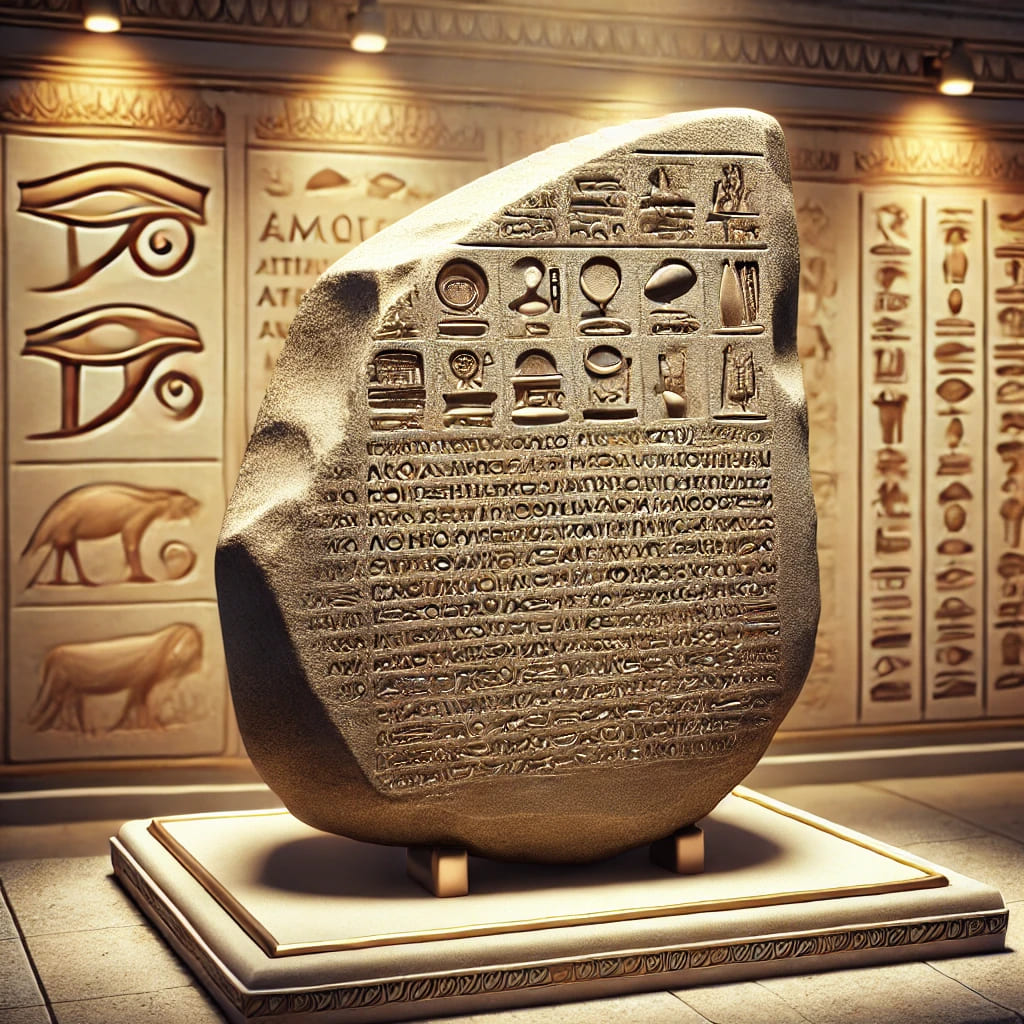
Deciphering the Rosetta Stone
The Rosetta Stone’s greatest contribution to human knowledge lies in its role as the key to deciphering ancient Egyptian hieroglyphs, a script that had been unreadable for centuries. Its discovery in 1799 set off a wave of scholarly curiosity and a race to crack the code, ultimately unlocking the door to understanding the rich tapestry of ancient Egyptian history, culture, and religion.
The Key to Understanding Ancient Hieroglyphs
Deciphering the Rosetta Stone was no small feat. For centuries, the meaning of Egyptian hieroglyphs had been lost, as knowledge of the language and its script had disappeared after the fall of the ancient Egyptian civilization. Scholars knew that the Rosetta Stone’s inscriptions held the potential to unlock this mystery, as it featured the same text in Greek, Demotic, and hieroglyphs.
The Greek script, which was still understood at the time, provided the foundation for decoding the other two scripts. Early efforts to crack the code were led by scholars such as Thomas Young, a British polymath, who identified that Demotic was an intermediate script between hieroglyphs and the more accessible Greek. He also discovered that some hieroglyphs were phonetic, representing sounds rather than ideas.
However, it was Jean-François Champollion, a French linguist and Egyptologist, who made the breakthrough. Building on Young’s work, Champollion realized that hieroglyphs combined phonetic symbols (similar to letters in the alphabet) and logograms (symbols representing whole words). In 1822, Champollion published his findings, demonstrating how hieroglyphs worked as a complex but systematic writing system. This achievement established Champollion as the founder of modern Egyptology.
The Significance of Its Decipherment
The decipherment of the Rosetta Stone had profound implications for the study of ancient Egypt. For the first time in over a millennium, scholars could read texts written by the ancient Egyptians themselves, rather than relying on secondhand accounts from Greek and Roman historians.
- Cultural Insights:
The ability to read hieroglyphs revealed a treasure trove of information about daily life, art, and culture in ancient Egypt. Religious texts, literary works, and inscriptions on temples and tombs came to life, providing a deeper understanding of how Egyptians viewed the world and their place within it. - Administrative Practices:
Many deciphered texts included legal and administrative documents, such as tax records, contracts, and decrees. These revealed the organizational structure of the ancient Egyptian state and the relationship between the pharaohs, priests, and common people. - Religious Beliefs:
Hieroglyphic texts also offered unparalleled insights into Egyptian religion, including their intricate pantheon of gods, beliefs about the afterlife, and elaborate burial practices. This knowledge transformed our understanding of one of the most influential civilizations in history.
The Role of Multilingual Inscriptions in Decoding
The multilingual nature of the Rosetta Stone was instrumental in the decipherment process. By comparing the three inscriptions, scholars could align phrases in the known Greek text with corresponding phrases in Demotic and hieroglyphs.
- Greek as the Rosetta Key:
Since Greek was a well-understood language, it provided a literal roadmap to the meaning of the other scripts. Phrases such as “the decree of the king” and proper names like “Ptolemy” served as anchor points in the translation process. - Demotic as a Bridge Script:
Demotic, which was the script used in everyday Egyptian life during the Ptolemaic period, helped bridge the gap between the hieroglyphs and Greek. Its simpler, more cursive style was easier to interpret, acting as a stepping stone for understanding hieroglyphs. - Hieroglyphs as a Complex Puzzle:
The hieroglyphic script posed the greatest challenge due to its combination of phonetic and symbolic elements. Multilingual texts like the Rosetta Stone provided the essential comparative material needed to decode this intricate system.
Without the multilingual inscriptions on the Rosetta Stone, it is likely that hieroglyphs would have remained a mystery for much longer. The artifact’s ability to connect three distinct writing systems embodies its monumental role in linguistic history.
The decipherment of the Rosetta Stone not only revolutionized Egyptology but also highlighted the power of language as a key to understanding human history. By unraveling the secrets of hieroglyphs, scholars were able to reconnect with one of the world’s most fascinating ancient civilizations, preserving its legacy for future generations.
Why Is the Rosetta Stone Important?
The Rosetta Stone is more than an archaeological artifact; it is a cornerstone of linguistic discovery and historical understanding. Its significance transcends its role in deciphering hieroglyphs, influencing modern linguistics, cultural studies, and even global perceptions of language and translation.
Its Impact on Modern Linguistics
The Rosetta Stone has had a profound influence on modern linguistics, revolutionizing how ancient scripts are studied and deciphered. By providing the key to unlock Egyptian hieroglyphs, it paved the way for scholars to decode other ancient languages.
- Catalyst for Comparative Linguistics:
The methodologies used to decipher the Rosetta Stone laid the groundwork for the field of comparative linguistics, where languages are analyzed side by side to uncover relationships and patterns. These techniques have been applied to scripts like cuneiform and Linear B, deepening our understanding of ancient Mesopotamian and Minoan cultures. - Broader Understanding of Writing Systems:
The discovery highlighted the diversity and evolution of writing systems, demonstrating how scripts can serve religious, administrative, and daily purposes. It emphasized the interplay between phonetic and symbolic elements in complex writing systems. - Inspiration for Deciphering Other Scripts:
The success with the Rosetta Stone inspired similar breakthroughs, such as the decipherment of the Maya script. It demonstrated that even the most cryptic ancient writing could be understood with enough effort and comparative material.
Contributions to Historical and Cultural Studies
The Rosetta Stone unlocked the vast trove of ancient Egyptian texts, providing unparalleled insights into their civilization.
- Revealing Egyptian History:
Texts like temple inscriptions, royal decrees, and personal letters brought to life the chronology of Egyptian rulers, major events, and everyday life. These records gave historians the tools to reconstruct Egypt’s political, economic, and social history. - Understanding Religion and Mythology:
Deciphered hieroglyphs revealed rich details about Egyptian religion, including the beliefs surrounding the afterlife, gods, and rituals. This has allowed scholars to connect ancient Egyptian mythology with broader cultural narratives in the ancient world. - Sociocultural Dynamics:
Administrative texts uncovered how the Egyptian state operated, including tax systems, trade, and governance. These documents showcased the complex relationships between the ruling elite, religious institutions, and ordinary citizens.
The Rosetta Stone as a Symbol of Discovery
Beyond its academic contributions, the Rosetta Stone remains a global icon of discovery and the power of language.
- A Universal Symbol of Translation:
The phrase “Rosetta Stone” has become synonymous with solving complex puzzles or understanding something previously incomprehensible. It symbolizes the critical role of language in bridging cultures and eras. - Inspiration for Modern Tools:
The Rosetta Stone inspired the name for language-learning software and tools that aim to break down barriers in communication, emphasizing its lasting legacy in translation. - Global Recognition:
Its status as one of the most famous artifacts in the world highlights the universal fascination with humanity’s past and the shared heritage it represents.
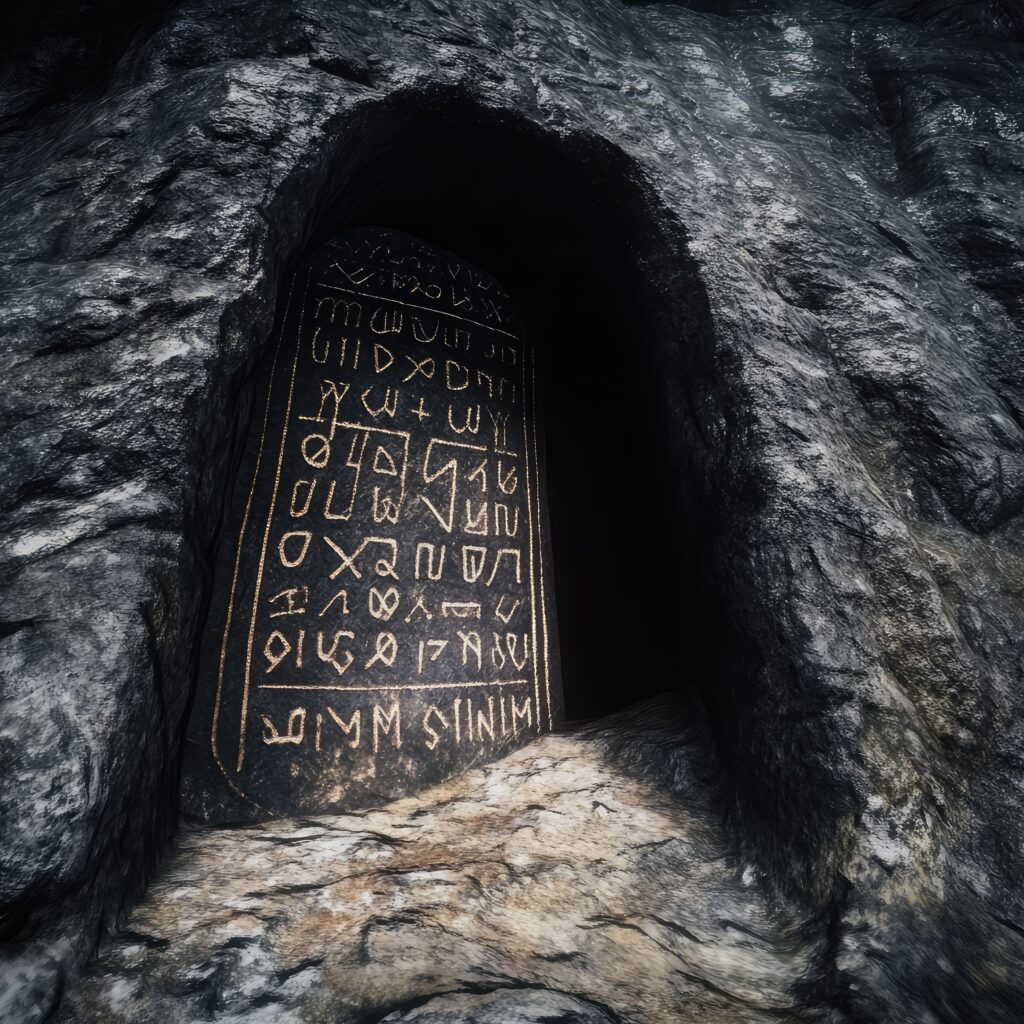
Fun Facts and Lesser-Known Details About the Rosetta Stone
The Rosetta Stone’s journey and legacy are filled with intriguing details and surprising twists, making it one of history’s most fascinating artifacts.
Interesting Facts About Its Discovery
- Material Composition:
The Rosetta Stone is not made of granite, as often thought, but granodiorite, a durable volcanic rock. Its dark surface with lighter inscriptions creates a striking contrast that adds to its mystique. - Accidental Finding:
The discovery of the Rosetta Stone was entirely accidental. French soldiers repurposing ancient materials for fort construction stumbled upon it, not realizing the profound impact it would have on history. - Initial Theories:
When first discovered, scholars didn’t immediately recognize its significance. Some believed it was a simple decorative or religious object before the importance of its multilingual inscriptions was understood.
Cultural References and Modern Symbolism
The Rosetta Stone has become a cultural touchstone, appearing in various forms of media and inspiring innovations.
- Pop Culture References:
The Rosetta Stone has been referenced in books, movies, and TV shows as a metaphor for solving mysteries. For example, it has appeared in films like “The Mummy” and is often featured in documentaries about ancient history. - Naming Conventions:
Modern tools, such as the Rosetta language-learning software, borrow the name to emphasize their mission of bridging linguistic gaps. Similarly, Rosetta was the name of a space probe, underscoring its role in solving cosmic mysteries.
Myths and Misconceptions
Despite its fame, several myths and misconceptions surround the Rosetta Stone:
- Myth: It Was an Egyptian Creation:
While the Rosetta Stone was inscribed in Egypt, it dates to the Ptolemaic era, a period of Greek rule. Its content reflects the fusion of Egyptian and Hellenistic cultures. - Myth: It Was Always Treated as a Treasure:
Initially, the Rosetta Stone was viewed more as a curiosity than a treasure. Its true significance wasn’t fully realized until scholars began studying its inscriptions. - Misconception: Its Decipherment Was Instantaneous:
The process of deciphering the Rosetta Stone took decades, with contributions from multiple scholars like Thomas Young and Jean-François Champollion. It was not a quick or straightforward task.
The Rosetta Stone’s story, from accidental discovery to global icon, is a testament to the enduring human quest for knowledge and connection. Its legacy continues to inspire curiosity and creativity, ensuring its place as one of the most celebrated artifacts in history.
Conclusion
The Rosetta Stone stands as one of history’s most remarkable discoveries, a true bridge between the past and the present. Its importance lies not only in its role as the key to deciphering Egyptian hieroglyphs but also in the profound impact it has had on our understanding of ancient civilizations and the development of linguistics. By unlocking the secrets of a long-lost language, the Rosetta Stone has given voice to ancient Egypt, revealing its culture, governance, religion, and daily life in ways that were once unimaginable.
Beyond its academic contributions, the Rosetta Stone remains a powerful symbol of discovery, curiosity, and the enduring human desire to connect with our ancestors. Its multilingual inscriptions underscore the importance of language as a tool for communication and understanding, both within and across cultures. In the modern world, the phrase “Rosetta Stone” has become synonymous with breakthroughs and solving complex puzzles, reflecting its timeless legacy.
But the Rosetta Stone is more than just a historical artifact—it is a living testament to the value of preserving and studying the relics of the past. It continues to inspire researchers, historians, and linguists, while also captivating millions of visitors from around the world who see it displayed at the British Museum.
